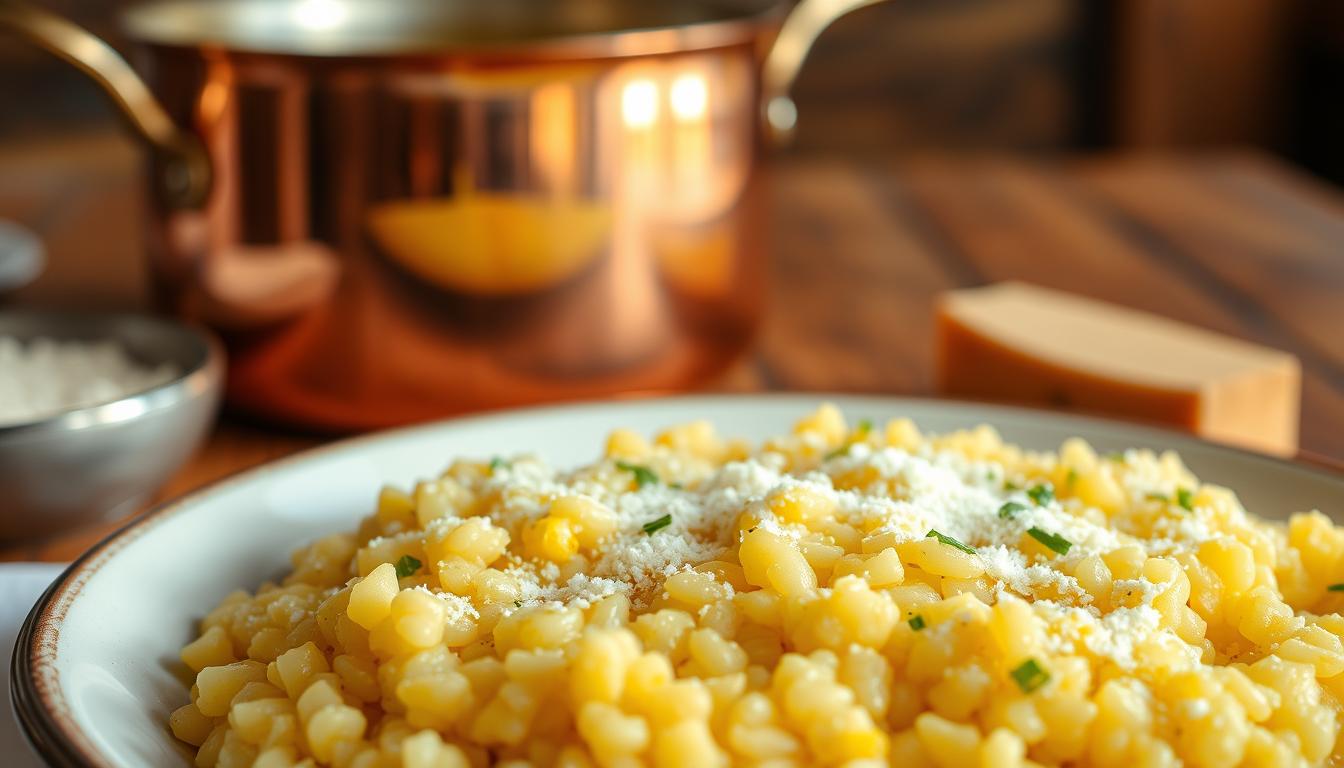Embark on a culinary journey through Italy with our comprehensive guide to Risotto alla Milanese. This beloved dish, hailing from Milan, has won the hearts of food enthusiasts worldwide. It is celebrated for its creamy texture and distinctive yellow hue.
This quintessential Italian dish embodies the pinnacle of culinary artistry. Its creamy risotto and the delicate essence of saffron set it apart. We delve into what makes Risotto milanais a culinary treasure, essential for anyone passionate about Italian cuisine.
Key Takeaways
- Discover the rich history behind Risotto alla Milanese.
- Learn the secrets to achieving the perfect creamy texture.
- Understand the importance of saffron in this traditional dish.
- Explore variations of the classic recipe.
- Get tips on serving and pairing Risotto alla Milanese.
The Rich History of Risotto alla Milanese
Risotto alla Milanese, a quintessential Italian dish, boasts a rich history spanning centuries. Originating in the northern region of Italy, specifically in Milan, this beloved recipe has undergone significant evolution over time.
Origins in Northern Italy
The roots of Risotto alla Milanese trace back to Northern Italy, where it was first prepared with saffron-infused broth. This characteristic gives the dish its distinctive yellow hue. This risotto au safran has become synonymous with traditional Italian cuisine, particularly in Milan, where it remains a staple.
Evolution Through the Centuries
Over the centuries, Risotto alla Milanese has undergone significant transformations, influenced by various cultural and culinary factors. From its humble beginnings to its current status as a revered plat de riz italien classique, this dish has been refined into a recette authentique de risotto. It showcases the best of Italian culinary heritage. For those seeking the meilleure recette de risotto milanais, understanding its evolution is key to appreciating this iconic risotto à la milanaise.
Today, Risotto alla Milanese continues to be celebrated for its rich flavors and historical significance. It remains a timeless classic in Italian cuisine.


